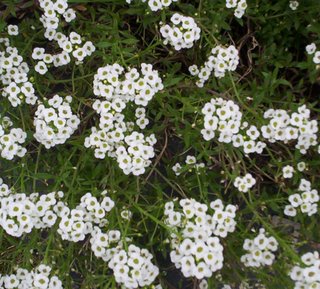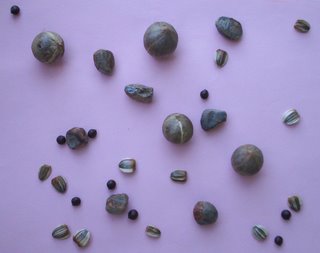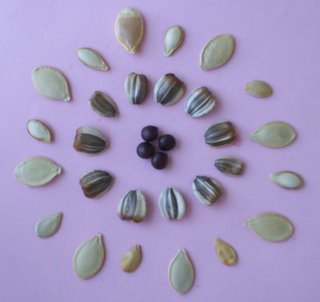
Once upon a time a long, long time ago I had a small market garden in Napa County. I was all of eight years old and I sold my tomatoes, squash, and flowers from a large garden cart beside the road. Warm afternoons I could be found hose in hand, keeping my garden lush and green. However, I had one spot I never watered. It was my “Magic Garden.”
The Magic Garden occupied the hottest spot in the yard. It consisted of a narrow foundation-planting strip sandwiched between the south wall of the stucco house and a long asphalt driveway. Not only was this the hottest part of the yard, it was also the wettest spot in the winter. And it was in this very spot that I first fell in love with Sweet Alyssum.
Most mornings I would wake up early and run out to inhale the fresh sweet scent of the rose and white flowered alyssum that bloomed nearly year around. I was sure that among the insects that visited the small delicate looking flowers that real fairies could be found. As hard as I worked for my other flowers, I always appreciated the alyssum, which thrived on so little care. I pulled a weed or two from time to time and other than that, they completely took care of themselves.
Pam Pierce, in Wildly Successful Plants for Northern California (Sasquatch Books) list Sweet Alyssum as one of a handful of plants that thrive in our area with little or no care. She reports finding Alyssums reseeding and naturalized in long abandoned gardens and estates. She also notes that the offspring of selected hybrids may not be as compact and the colors may not be so vibrant but that these seedlings are likely to be even tougher than their parents.
Depending on the reference, Alyssum is listed as either a hardy annual or a short-lived perennial. Plants are generally low growing, from about 3 to 8 inches tall, with nearly an equal spread when mature. They can be planted in spring or fall; if you really don’t plan to water them, plant them in the fall. That way they can develop deep roots systems before summer’s drought sets in. And they will bloom all winter, which is a great bonus. Sweet Alyssum plants make excellent rock garden specimens, edging for pathways and garden borders, and they look fabulous spilling out of window boxes and containers.
Alyssum also deserves a place in vegetable and herb gardens. Herb gardens often incorporate plants of historic or anecdotal interest. The name of this flower (alyssum) comes from the Greek and means “without madness.” Sweet Alyssum was once added to bouquets to signify forgiveness, apology, or otherwise request an end to hostilities. Today it is used in flower essence remedies to overcome anger, madness, and their after effects. While I can’t vouch for this particular theory, gardening is generally considered therapy, and what better therapy could there be than a sweet flower?
This garden therapy is also therapy for your vegetable garden. These flowers make great living mulch, and they attract beneficial insects who will stay to hunt among your plantings. Speaking of vegetables, Alyssum flowers are edible! The flowers don’t really taste anything like they smell. They have a slightly sweet and peppery flavor similar to kale. In fact Sweet Alyssum and kale are both in the Brassica family as are cabbage, cauliflower, broccoli and many other vegetables. All the Brassicas are considered nutritious and health giving. Sweet Alyssum is no exception. It was once used in Spain to treat and prevent scurvy – a condition caused by malnutrition.
While most of us won’t be serving a menu planned around Sweet Alyssum, a few colorful snips are lots of fun in the kitchen. They can be added to salad, frozen in ice cubes, folded into omelets, and added to cold summer soups. Sweet Alyssum when paired with a wedge or two of fruit or a sprig of parsley makes a fun edible garnish to dress up snack or desert trays. Be creative. How about a molded Jell-O or aspic salad with contrasting flowers nestled inside?
Sweet Alyssum comes in a pastel rainbow from white through a number of shades of rose, mauve, lilac, and purple. There are even some rare yellow and orange varieties you might run across in specialty nurseries. Most local nurseries and seed catalogs stock seeds and six packs of young plants in the common colors. Seed packets and six packs are often available in both single colors and mixes. I prefer to purchase the six packs and tuck them in here and there in the garden. The small seeds take a little care to bring to maturity and the tasty seedlings are a magnet for slugs. However, if slugs aren’t a problem in your garden the seeds can be broadcast in spring and fall. Keep the seed bed evenly moist until your plants are established and then you can ignore them if you must.
Sweet Alyssum is truly a carefree flower. It’s not particular about soil, soil amendments, fertilizer, or even water once it is established. It can thrive in full sun, or part shade. Past the seedling stage it is not likely to be bothered by pests, and it may actually reduce pest problems by attracting beneficial insects. The sweet flowers can be enjoyed over a long season, both in the garden and the kitchen. And if slugs aren’t a problem in your garden it is likely to self-sow bringing permanent delight to your borders and extra seedlings to share with your friends. If I could only plant a few flowers this season, Sweet Alyssum would be high on my list. I am sure you will enjoy them too.
Next week we will be taking a look at an easy to grow super food, that tastes pretty good too. It is high in iron, fiber, vitamins A, C, K and folate – and you can grow it all year round! Until then, you can always find me Digging the Dirt . . .
Copyright 2006 Harvest McCampbell, from my column "Digging the Dirt," published in The Hoopa Valley People Newspaper, June 6, 2006. Posted here with permission.
Related articles on attracting beneficial insects:
Beneficial Insects
More Beneficial Insects
Other Edible Flowers:
Cilantro
Daisies & Violets
Fennel
Pumpkin


